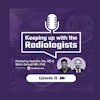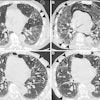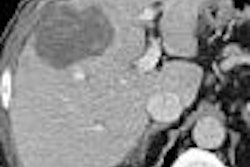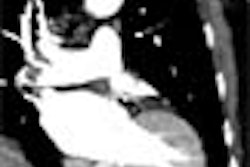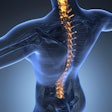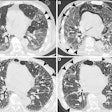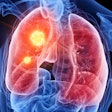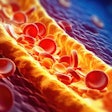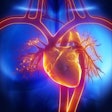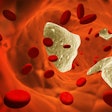Wouldn't it be nice if virtual colonoscopy CAD could perform accurately in the worst of circumstances, leaving patients with an easy and noninvasive colorectal screening test without the uncomfortable bowel prep? If such a CAD could be devised -- and it's a big "if" -- then those who have shied away from screening thus far might just find themselves more willing.
Such a test is the overarching goal of recent experiments by Dr. Michael Zalis and colleagues from Massachusetts General Hospital in Boston, who modified and then challenged a tried-and-true CAD algorithm on sets of tagged, unprepped colonic CT data -- after the fecal material had been digitally subtracted with a separate application. The setup did work, but not particularly well.
The CAD scheme, which included shape-based detection of polyps and discrimination, was based on a Bayensian neural network, had been trained on CT data from 121 traditionally cleansed VC subjects, yielding 90% sensitivity with a mean 1.2 false-positive detections per case (99% sensitivity for polyps 6 mm and larger).
"The characterization of false-positives includes analysis of attenuation within those lesions, and then the classification between polyps and false-positives was made by a neural network (with) generation of classification discrimination," Zalis said in a presentation at the 2004 RSNA meeting in Chicago.
A separate electronic subtraction software applied to the dataset before CAD included threshold-based subtraction of tagged material, followed by nonlinear mucosal reconstruction, and symmetry- and convolution-based fold analysis.
The study in a small group of 26 well-tagged datasets aimed to evaluate the effect of tagging on CAD performance with particular attention to specificity, Zalis said. The group also sought to test the effects of electronic cleansing on CAD performance in evaluating tagged datasets.
"Tagging material can submerge polyps and as a result can limit the 3D visualization that has been shown to be useful for human reader evaluations," Zalis explained. "However, it's known that electronic cleansing can introduce subtraction artifacts into these datasets once they've been so modified, and one of the questions we wanted to address was to what degree does that process inhibit or otherwise affect the CAD? Our hypothesis was that CAD specifically modified to function in the minimal prep environment could demonstrate false-positive rates similar to CAD performance in CT colonography (CTC or VC).
In a separate study, 150 subjects at moderate risk for colorectal polyps and cancer underwent virtual colonoscopy with iodine-based oral preps, with colonoscopic confirmation of the results. After completing one of 11 tagging regimens, the patients underwent virtual colonoscopy on a 16-slice CT scanner using 2.5-mm collimation and 1.25-mm overlapping reconstructions.
The researchers chose 26/150 of the cases that were reasonably well-tagged (having scored 4 or 5 on a 1-5 scale from one of the top two protocols), and applied the CAD and subtraction tools in four combinations for testing control purposes.
- Condition 1 applied the CAD algorithm, modified to operate with tagged, minimal-prep virtual colonoscopy datasets.
- Condition 2 applied the same modified CAD to datasets that had undergone electronic subtraction of fecal material.
- Control 1 applied the unmodified CAD algorithm to tagged datasets.
- Control 2 applied the unmodified CAD to electronically cleansed datasets.
- Control 3 applied the unmodified CAD to standard cathartically cleansed datasets for which the false-positive rate had been determined to average 2.9 per case.
Only five polyps were found in the average-risk cohort, and 2/26 cases had polyps larger than 6 mm, all of which were detected by CAD.
"The false-positive rate for condition 1, tagging plus CAD, was 4.9 false-positives per case," Zalis said, compared with 20 false-positives for condition 2, a statistically significant difference (p < 0.0001, two-tailed test). The results deteriorated further when the unmodified CAD algorithm was applied to both the tagged and subtracted datasets (controls 1 and 2, respectively) compared to the modified CAD, he said.
Regarding the principal sources of errors, on CAD without subtraction "the majority ... were for inhomogeneous tagging (60%), with haustral folds and other features following behind," Zalis said. On CAD with digital subtraction, subtraction artifacts (60%) at air-fluid interfaces as well as those shaped like polyps constituted the majority of false-positives, followed by inhomogeneous tagging (35%).
The principal limitations of the study included its small cohort size, the logistical constraints associated with combining human and CAD interpretation, and any inaccuracies associated with evaluation time and performance differences between the two readers, Zalis noted. In addition, the effects of poor prep on CAD were not evaluated. Finally, relatively successful tagging cases were preselected for evaluation of the CAD.
Thus, in a low-prevalence cohort, the modified CAD demonstrated an increased false-positive rate in minimal-prep CT colonography compared to CAD in cleansed colons, Zalis said.
"Implementing electronic subtraction prior to implementing the tagging further increased the number of false-positives by the CAD," he said. Artifacts associated with electronic subtraction are acceptable to human readers, but introduce additional errors into CAD interpretation.
"This is a fairly good dataset for a human evaluator," Zalis said, projecting a CT image on the screen, "but you can see in the subtracted dataset there is some inhomogeneously tagged incompletely subtracted material. This is the overlay of the CAD detection, numerous as the (findings) are, illustrating where this kind of problem arises, in this particular case due to the combination of subtraction artifact and inhomogeneous tagging."
The modified CAD's high sensitivity should not be overinterpreted due to the small size of the cohort, and the high prevalence of false-positives CAD also found, he said.
"The performance merits further engineering, not only of the CAD, which needs to be further optimized to operate well with the electronic subtraction, but also the electronic subtraction (which requires) study in a larger cohort, with particular attention to large cohort size for stability of performance," Zalis said.
By Eric Barnes
AuntMinnie.com staff writer
May 18, 2005
Related Reading
Support vector machines boost accuracy of VC CAD, May 3, 2005
New VC CAD applications show promise as second reader, March 4, 2005
Iodine tagging regimen yields best VC results, January 27, 2005
VC CAD system finds polyps in opacified fluid, January 3, 2005
Low-prep VC study finds CAD can be fooled, December 23, 2004
Copyright © 2005 AuntMinnie.com

